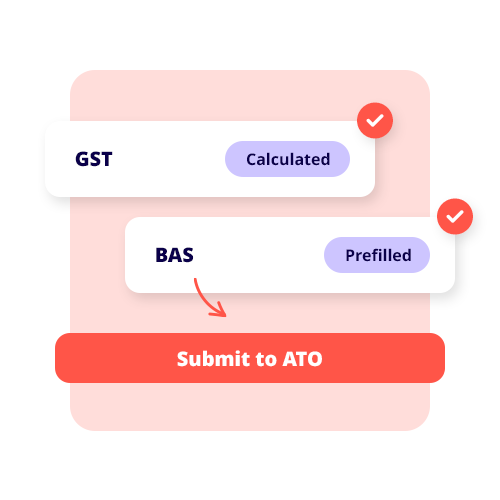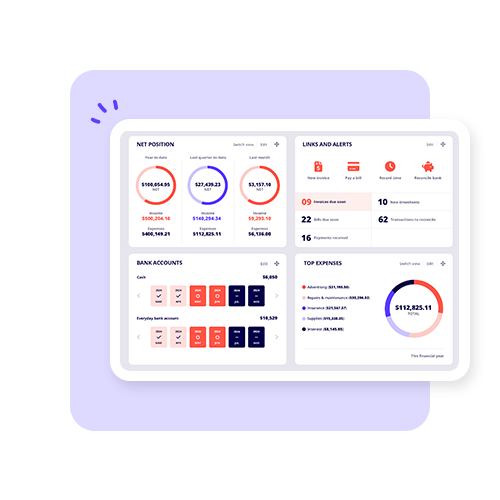TABLE OF CONTENTS
There are very few metrics as useful – or as straightforward – as the current ratio, at least when it comes to measuring your business’s short-term financial health. It’s handy when you’re preparing to apply for a loan or talking to investors, or just for keeping an eye on your daily operations. Better still, breaking down the basic liquidity ratio is incredibly simple can feed into better business decision-making.
But like any number on a financial statement, the current ratio is just one piece of the broader puzzle. Here’s what it actually tells you and why you should stay on top of it.
What is the current ratio?
The current ratio – sometimes called the working capital ratio – is a type of liquidity ratio. In simple terms, it compares your current assets to your current liabilities to see if you’re able to actually pay off your short-term debts. It gives you a fair bit of insight into whether your business has enough resources on hand to cover the bills coming due in the next 12 months.
You’ll find both your current assets and your current liabilities on your balance sheet. If in doubt, speak to your accountant!
The current ratio formula
Calculating the current ratio is simply dividing your company’s current assets by its current liabilities:
Current ratio = Current assets ÷ Current liabilities

Current assets are all the things your business expects to convert into cash within a year, such as:
- Cash.
- Accounts receivable.
- Inventory.
- Short-term investments.
- Marketable securities.
- Prepaid expenses.
Current liabilities, on the other hand, are debts and obligations your business is expected to settle within the same 12-month window:
- Accounts payable.
- Wages payable.
- Taxes payable.
- Short-term debts (like a line of credit).
- The current portion of long-term debt.
The higher the current ratio, the more comfortably your business can tackle its short-term obligations.
What does a good current ratio look like?
A company’s current ratio of 1.0 or higher is seen to be pretty healthy. It means your business has at least $1 in current assets for every $1 in current liabilities. A ratio below 1.0 could mean you have a few liquidity problems on the horizon – in other words, you might not have enough readily available assets to pay down your short-term debts.
But it’s important to realise that the ‘ideal’ current ratio depends on the industry you’re in. A retail business with high turnover of inventory, for example, might operate comfortably with a lower ratio, while a manufacturing business that has to hold onto a large amount of stock and raw materials will probably need a higher ratio to stay stable.
So rather than aiming for a specific number, compare your current ratio to your industry average or to other businesses with similar business models.
High vs low current ratio: what it tells you
If your company’s current ratio is too low, it might mean you’re about to run into some cash flow issues. You could find yourself struggling to pay suppliers, staff, or your tax bills on time – especially if your accounts receivable are slow to come in or your inventory doesn’t move fast enough.
On the flip side, a very high current ratio (e.g. above 3.0) might suggest your business isn’t using its current assets properly. You could be sitting on too much idle cash or struggling to sell inventory or reinvest working capital.
Remember: the current ratio is a snapshot. It tells you how things look at one particular moment in time. Your company’s ability to pay its short-term liabilities can change on a dime depending on things like sales cycles, seasonal peaks and your payment terms with suppliers/customers.
How to use the current ratio in real life
Imagine your business has the following on its balance sheet:
- Current assets: $150,000
- Current liabilities: $100,000
So using the ratio formula it would look like:
Current ratio = $150,000 ÷ $100,000 = 1.5
This means your business has $1.50 in current assets for every $1 in current liabilities – a pretty healthy buffer, indicating that you should be able to handle your short-term obligations without much stress.
But what if most of that $150,000 is tied up in inventory and prepaid expenses? If you struggle to sell off your inventory in time, or if you can’t recover those prepaid costs, your business might not be as liquid as the ratio suggests.
That’s why you’ll need to look deeper than the headline number and review the quality of your current assets. Liquid assets – such as cash and accounts receivable – are more reliable than stockpiles of inventory or customers who take a long time to pay.
Other liquidity ratios available to you
The current ratio gives a pretty broad overview of your liquidity, but some other liquidity ratios can give you different – yet still very important – insights.
Quick ratio (acid test ratio)
This is a stricter version of the current ratio, as it excludes your inventory and prepaid expenses. Instead, it looks at only your most liquid assets. The formula is:
Quick ratio = (Current assets – Inventory – Prepaid expenses) ÷ Current liabilities
This will show you your company’s ability to meet short-term debts using only assets that can be quickly converted to cash.
Cash ratio
This one looks at only your most liquid assets – i.e. cash and marketable securities – divided by your current liabilities. It’s the most conservative liquidity ratio and is great for businesses with unpredictable income or large upcoming obligations.
Keeping on top of these ratios every so often can help you spot the early signs of financial distress and make proactive decisions about cash flow, spending or financing.
What your current ratio can help you do
- Cash flow planning: Anticipate short-term liquidity issues before they become a real problem.
- Be ready for funding: Banks and lenders will look at liquidity ratios to see whether you are creditworthy.
- Investor confidence: A strong, stable ratio shows that you’re managing your working capital with ease.
- Better operational output: Spot inefficiencies in inventory turnover, collections, supplier terms and more.
The current ratio is a simple equation that can give you some great insights into your business’s financial health right now. It tells you how well your company can cover upcoming expenses using its current assets, and whether you’re operating with a comfortable liquidity buffer – or walking a financial tightrope.
But like all financial metrics, it should always be used in context. Don’t just rely on a single number. Compare your current ratio with your industry average and dig into the makeup of your assets and liabilities.



















































